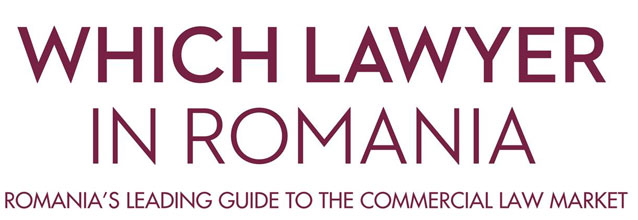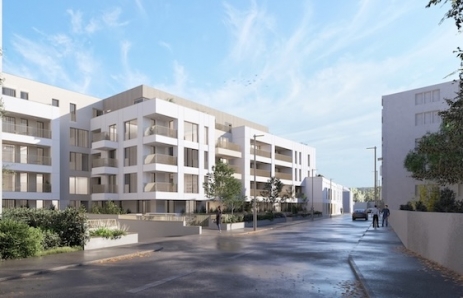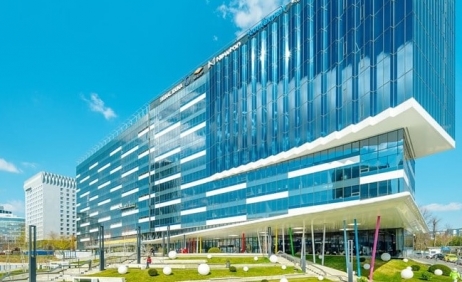
Authors: Antonia Nica. Senior Associate, Real Estate & Construction and Roxana Roman, Partner, Head of Real Estate & Construction, Wolf Theiss
As Environmental, Social and Governance (ESG) standards continue to dominate business conversations, the European Union (EU) drives the momentum by placing the 'energy efficiency first' principle at the heart of its energy policy. These efforts further aim to enhance governance, transparency and strengthen the link between climate change mitigation and environmental protection measures.
A significant update came in the form of revised Directive (EU) 2024/1791, which establishes new objectives for energy efficiency, in order to achieve the climate-neutral future envisaged by the European Union and to decrease greenhouse gas (GHG) emissions by at least 55% by the year 2030.
According to the statistics that triggered the European Union to revise its energy policies, buildings are responsible for approximately 40% of the EU's total energy consumption and 36% of GHG emissions generated by the energy sector. In this context, in July 2024, the Romanian regulator responded by amending the provisions of Law no. 372/2005 on the energy performance of buildings ("EP Law"), aiming to improve the energy performance of the Romanian buildings.
But what do these changes mean for investors and developers navigating the Romanian construction landscape? Below is a breakdown of the new obligations and their impact on the construction permit process in Romania.
1 New requirements for obtaining a building permit
In order to secure the building permit, in addition to the already usual prerequisite endorsements and the technical documentation (DTAC), the developer / investor of the future project must now prepare two reports:
-
the nZEB (nearly-zero-energy-building) conformity report
-
the feasibility study on high efficiency alternative systems.
The urbanism certificate issued by the competent public authority for construction purposes must explicitly list these reports as prerequisites for the issuance of the building permit.
1.1 nZEB conformity report
The nZEB conformity report is prepared during the design phase and provides a forecast of the energy performance of a future building, which ultimately will be recorded in the final energy performance certificate. The report mainly assesses whether the future building will meet the minimum energy performance standard requirements.
The nZEB conformity report is part of the technical documentation and is drafted by an energy auditor according to the methodological norms for computation of energy performance.
While the concept was introduced in the EP Law in July 2024, the concept is rooted in the technical regulation for the new methodology for computation of building energy performance approved in February 2023 by the Ministry of Development and Public Administration ("Technical Regulation").
According to the Technical Regulation, the nZEB conformity report may conclude that the development of a certain nZEB building is not feasible from an economical point of view, without providing any other additional criteria that would lead to such a conclusion. In the absence of any such additional criteria, the provisions of the Technical Regulation are rather confusing and contradictory (and we have concerns regarding their legality). This ambiguity raises concerns regarding whether the Technical Regulation fully aligns with the EU's energy performance goals.
1.2 Feasibility study
The feasibility study is not a new concept for the Romanian real estate market, having been included in the EP Law back in 2018.
Nevertheless, this year's changes to the EP Law have brought more clarity in terms of its purpose. The EP Law clarifies that the feasibility study is drafted by the designer and should assess, from a technical, economic and environmental perspective, the opportunity for using renewable energy sources. The study should also determine the best mix of technologies to minimise the consumption level of non-renewable primary energy and the pollution level of a building. As far as new buildings are concerned, the feasibility study may be included in the nZEB conformity report.
Similar to the nZEB conformity report, the feasibility study is part of the technical documentation required for the construction work authorisation.
1.3 Consequences of the lack of an nZEB conformity report or of the feasibility study
Failing to include the nZEB conformity report or the feasibility study in the technical documentation based on which the building permit is issued, may be sanctioned with fines ranging from RON 7,500 to RON 10,000. However, the larger concern for investors / developers is the risk of challenges to the building permit itself.
The EP Law specifically provides that an urbanism certificate obtained for construction purposes related to the development of new buildings, which does not include a request to prepare and submit the nZEB conformity report and the feasibility study as prerequisites for the issuance of the building permit, is deemed incomplete. A building permit based on an incomplete urbanism certificate may face legal challenges.
If the urbanism certificate obtained for construction purposes fails to include the requirement to prepare and submit the nZEB conformity report and the feasibility study as part of the technical documentation based on which the issuance of the building permit is requested, this will entitle the competent authority to refuse the issuance of said building permit. If the building permit is already issued, absence thereof may jeopardise the valid completion of the reception formalities and ultimately, the registration of the new building with the land book.
Investors and developers should therefore take into account these energy efficiency requirements during the budgeting and planning stages of new construction projects in order to avoid potential setbacks.
2 Other key amendments to the EP Law
In addition to the changes outlined above, the Romanian regulator has introduced a new concept: the preliminary energy performance certificate. This certificate may be obtained even prior to the completion of works, offering developers / investors the opportunity to demonstrate compliance with energy efficiency principles to financing banks, particularly when seeking green loans.
In addition, the current legal framework clarifies the applicability of the minimum standard energy performance requirements to various categories of buildings and constructions. For instance, the requirements do not apply to: industrial buildings; or constructions / buildings for which the EP Law does not specifically provide that the minimum requirements apply, provided that the respective constructions are not inhabited / used for more than 4 months.



 October 31, 2024 12:39
October 31, 2024 12:39 










